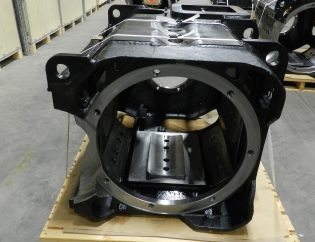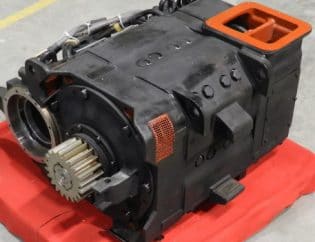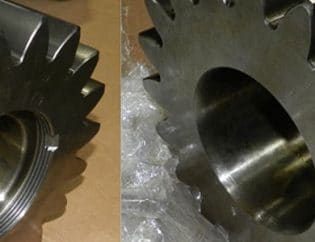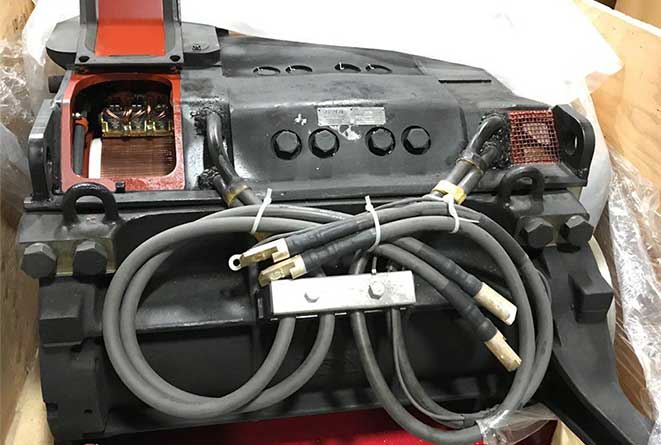
In This Article You Will Read:
- Introduction
- AC & DC traction motors
- Further Details of AC Traction vs. DC Traction Motors and Their Comparison
- Conclusion
Introduction
AC vs DC traction motors which one? In engineering terms, every device, invention, or product comes with its merits and demerits. In the locomotive industry, the pivotal role of locomotive traction motors results in constant development in this technology. In this article, we made a comprehensive comparison on AC vs DC traction motors
Initially, this industry followed the development path through the use of DC traction motors. The GP9, SD40, and SW1200 are famous examples of first-generation DC motors. After development stages in the adhesion levels, the SD60 and Dash 8 series conquered the industry for quite a while.
However, the adhesion levels were still far from optimal, and that is where the development and economization of AC traction motors technology came into play.
That being said, let us now introduce you to the two types of terminologies that will be frequently used throughout this article:
Tractive Effort=Weight on Driver Motors ×Adhesion
Where:
Adhesion=Coefficient of Friction ×Locomotive Adhesion Value
The locomotive adhesion value is in basic terms, the efficiency of a locomotive in converting available friction to utilizable friction at the rail and wheel contact point. In other words, the ability of a locomotive to convert the friction present between the wheel and the rail into useful friction that is required for the locomotive to move is the locomotive adhesion value.
The Greater this value is, the greater the efficiency of traction between the track and locomotive. This value ranges from 0.45 to 0.90 for DC and AC motors, respectively. The coefficient of friction’s value is generally considered between 0.4-0.45 for most scenarios i.e. dry and clean conditions for a locomotive’s operation.
Having discussed all the basics, let us now dive into the main topic i.e. the core differences between Ac vs Dc traction motors in terms of functionality and much more!
Contact our experts
Don’t hesitate to contact us!
AC vs DC traction motors
Feature | AC Traction Motor | DC Traction Motor |
Adhesion Levels | 37 to 39 percent adhesion levels. | 1st generation motors had about 18 to 20 percent adhesion levels, whereas newer models are rated at 25 to 27 percent adhesion levels. |
Advantages | *The advantage that AC motor has over DC motor is that the adhesion levels when using AC motor are 100 percent greater than DC motors. | *DC motors have far simpler procedures for maintenance and setup. |
Functionality and its merits and demerits | *In AC motors, the locomotive’s speed is controlled by changing the frequency, voltage, and current to the stator coils. The VFD i.e. Variable Frequency Drive allows the systematic manipulation of the parameters in a closed-loop feedback system. The acceleration control is a lot smoother than DC motors. | *In locomotives, DC motors are used in a series arrangement. The speed of the locomotive is controlled by the switching of resistance of the circuit. The driver of the locomotive changes the resistance’ value manually. |
Further Details of Ac vs Dc traction motors and Their Comparison
Another perspective where the topic of AC traction vs DC traction motors becomes interesting is the braking system. The braking system of AC motors is more efficient as well as more powerful than that of DC motors. The braking system of the locomotives which rely on DC motors consists of standard friction braking (tread brakes).
The braking force in a standard friction braking system depends only on the weight of the locomotive, which is a huge drawback. Slipping can also occur in the standard friction braking system and it does not have the capability to bring the locomotive to a standstill.
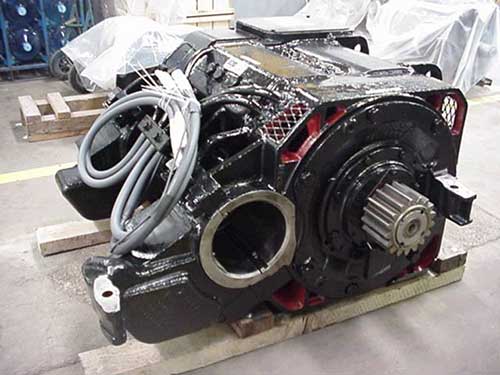
On the other hand, the braking system in locomotives utilizing AC motors is not dependent only on the locomotive weight. This is because, during braking, the locomotive can shift to a generative model (dynamic braking).
During productive mode, the electricity that is being produced by the AC traction motors using the rotation of the wheels as the energy source is in turn used to reduce the wheel rotation causing the locomotive to slow down.
The advantage of such a system is that it greatly increases the braking capabilities and brake clamping force. Also, no slipping can occur in this braking system as the drive system for braking is the same as the drive system used in traction which was discussed above.
This system also reduces the speed of the locomotive to zero unlike in DC traction motors.
Conclusion
Although the use of AC traction motors in today’s locomotive industry is widespread, it is still important to understand the merits and demerits of both AC and DC traction motor technologies. We hope that this article comprehensively summarized the key points.
If you still have any questions regarding the AC vs DC traction motors Or any other Locomotive traction motor parts, feel free to contact us and we will be more than happy to assist!
Contact our experts
Don’t hesitate to contact us!


